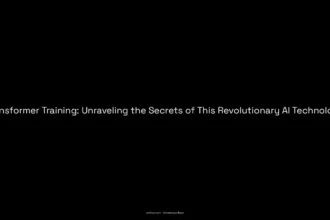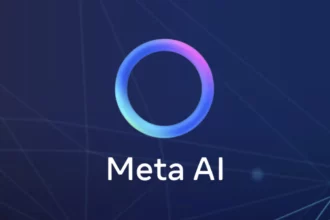Are you tired of scratching your head over which loss function to use for multi-class classification? Well, fret no more! In this blog post, we will unravel the mystery behind loss functions and equip you with the knowledge to make informed decisions. From the classic softmax and sigmoid activation functions to the intriguing variations of hinge loss, we’ve got it all covered. And just when you thought it couldn’t get any better, we introduce you to the holy grail of multi-class classification: categorical cross-entropy. So grab a cup of coffee, sit back, and let’s dive into the fascinating world of loss functions for multi-class classification. Trust us, it’s a journey you don’t want to miss!
Table of Contents
ToggleUnderstanding Loss Functions for Multi-Class Classification
In the pulsating heart of deep learning, the choice of a loss function is a pivotal decision. It’s akin to selecting the compass that will guide your model through the treacherous seas of data towards the desired outcome. When it comes to multi-class classification, where the task is to categorize data points into one of several classes, the stakes are high and the choice of loss function becomes even more critical.
The Binary Cross-Entropy loss function emerges as a beacon of efficiency in the realm of binary and multilabel classification challenges. A model’s output is a probability score—a value tethered between the anchors of 0 and 1—and the Binary Cross-Entropy loss function is the yardstick measuring the distance between the model’s predictions and the shores of reality. The closer the predicted probability is to the actual label, the lower the loss and the more accurate the model. In the specific use case of multi-class text classification with BERT, the Binary Cross-Entropy loss is the standard bearer, ensuring that even the most subtle nuances of text are not lost in translation.
Conversely, the Sparse Categorical Cross-Entropy loss function is the torchbearer for scenarios brimming with more than just two classes. Its brilliance lies in its ability to handle class labels as integers, which simplifies the process and reduces the model’s memory footprint. In the deep learning powerhouse PyTorch, Sparse Categorical Cross-Entropy is the go-to loss function for multi-class classification tasks, adept at discerning the fine lines between myriad classes.
Below is a succinct table that encapsulates the essence of these two loss function titans:
| Loss Function | Use-case | Framework | Description |
|---|---|---|---|
| Binary Cross-Entropy | Binary/Multilabel Classification | BERT for Multi-class Text Classification | Measures the distance between predicted probabilities and actual binary labels. |
| Sparse Categorical Cross-Entropy | Multi-class Classification (>2 classes) | PyTorch | Compares predicted class probabilities with integer class labels. |
As we navigate deeper into the realms of multi-class classification, we witness the interplay between Softmax and Sigmoid activation functions, Hinge Loss variations, and the amalgamation of Softmax and Cross-Entropy in Categorical Cross-Entropy. Each of these elements brings its own flavor to the mix, contributing to a richer understanding of the landscape and paving the way for more accurate predictions.
When charting the course for a multi-class classification model, the compass of your loss function must be chosen with the precision of a master cartographer. As you delve into the forthcoming sections, keep the characteristics of Binary Cross-Entropy and Sparse Categorical Cross-Entropy in mind, for they are the stars by which savvy data navigators set their course.
Softmax and Sigmoid Activation Functions
In the realm of neural networks, the grand maestros conducting the final performance of a model’s output are the activation functions. They are the final translators, turning raw, numerical outputs into a language we can understand—probabilities. The Softmax activation function emerges as the hero in multi-class classification problems. Picture a horse race with multiple contenders; Softmax is the discerning judge that not only picks the winner but also ranks all runners, assigning probabilities that collectively sum up to one. It’s a sophisticated way of saying, “This is our champion, and here’s how confident we are about it.”
On the flip side, when faced with multi-label classification—a scenario akin to a talent show where multiple talents can be recognized simultaneously—the Sigmoid activation function takes the stage. Each neuron’s output is like an individual judge’s score, independent of the others, transformed into a score between 0 and 1. This score represents the probability of whether a class label is relevant or not, without forcing the sum of probabilities to add up to one, allowing for a nuanced judgment of each talent on display.
Indeed, when pondering over the question “Can I use SoftMax for multi-label classification?” it becomes clear that while SoftMax excels in its exclusive, winner-takes-all approach for multi-class challenges, it’s the Sigmoid function that understands the harmony of multiple labels co-existing. This distinction is paramount, for it echoes the nature of the problem at hand—whether we seek a single victor or wish to acknowledge a spectrum of possibilities.
Thus, in the grand scheme of classification, we find that the Softmax and Sigmoid functions serve as the gatekeepers of neural network outputs, each with a role tailored to the complexity and nature of the task. They ensure that the neural symphony ends on the right note, delivering a prediction that can be interpreted with clarity and confidence—be it for a single winner or multiple stars shining on the stage of classification.
As we delve deeper into the intricacies of model architecture in the upcoming sections, remember that the choice between Softmax and Sigmoid is a strategic one, informed by the unique challenges and goals of each classification problem. With these tools at our disposal, we can tune our models to sing the right melody, hitting the high notes of accuracy and performance.
Hinge Loss and Its Variations
Imagine you’re a sculptor, chiseling away at the rough edges of a marble block to reveal the elegant figure within. In the world of multi-class classification, Hinge Loss operates in much the same way. It’s a tool that shapes the decision boundaries of our models with a deft touch, allowing for a margin of error that reflects the complex nature of real-world data. Unlike the unforgiving 0-1 loss, which penalizes every single misclassification without mercy, Hinge Loss introduces a more flexible approach, akin to the forgiving hand of an experienced artist.
At its core, Hinge Loss values smoothness and mathematical tractability. Where the 0-1 loss presents a landscape of jagged cliffs and abrupt drop-offs—courtesy of its dual inflection points and steep, infinite slope at zero—Hinge Loss offers the gentle slopes of a rolling hill. This more nuanced terrain makes it easier for optimization algorithms to navigate, leading to more robust models that can withstand the unpredictable winds of new and unseen data.
For those delving into the realm of multi-class classification, the Categorical Hinge Loss is an indispensable variation of this loss function. It extends the elegance of the binary Hinge Loss to the vibrant tapestry of multi-class problems, optimizing decision boundaries that can discern between a plethora of categories with precision and grace. By doing so, it allows the model to confidently assign class labels, even when faced with the ambiguity that often plagues real-world scenarios.
In the binary world, the standard Support Vector Machine (SVM) loss function stands tall. It is the foundation upon which two-class problems build their solutions, ensuring that the gap between the classes is as wide and as clear as possible, much like a well-defined river separating two distinct landmasses. This clarity of separation is crucial for creating models that can not only classify with accuracy but also with confidence.
As we forge ahead in the quest to perfect multi-class classification, the choice of loss function remains a pivotal decision. It’s a decision that can mean the difference between a model that stumbles in the dark and one that strides into the light of understanding. The Hinge Loss and its variations are torchbearers on this journey, illuminating the path to models that not only perform with precision but also resonate with the complexity of the world they seek to interpret.
Categorical Cross-Entropy: A Combination of Softmax and Cross-Entropy
Imagine a world painted in vivid colors, each hue representing a distinct category or class. In the realm of multi-class classification, Categorical Cross-Entropy stands as the master artist, adeptly mixing the vibrant Softmax function with the precision of Cross-Entropy loss to create a canvas of probabilities that captures the essence of our data’s story.
This powerful fusion, often referred to as softmax loss, is the cornerstone of training models like Convolutional Neural Networks (CNNs) to discern and categorize the complexities within our datasets. Picture a CNN, tasked with identifying images among countless classes—be it dogs, cars, or flowers. Categorical Cross-Entropy is the guiding force that teaches this network to output a probability distribution over these classes, ensuring that each image is matched with the right label with a high degree of certainty.
By employing this loss function, we enable the model to not only make a choice but to quantify the confidence of its predictions. It’s like betting on a horse race; the model places its bets on each class, with the softmax smoothing the odds and the cross-entropy ensuring the bets are sound.
In practice, when employing frameworks like TensorFlow or PyTorch, Categorical Cross-Entropy loss is the go-to choice for problems where an image could belong to any one of various classes. It measures the distance between the model’s predicted likelihoods and the one-hot encoded truth, driving the model’s parameters to adjust in a way that minimizes this distance, thus enhancing the accuracy of predictions.
However, the beauty of this loss function goes beyond its efficacy—it lies in its adaptability. Whether you’re using TensorFlow to classify exotic animals or PyTorch to navigate the nuances of medical imaging, Categorical Cross-Entropy remains a trusted ally, molding itself to the contours of your specific challenge.
As we delve deeper into the intricacies of classification models, let us remember the pivotal role of Categorical Cross-Entropy. It’s not just a function; it’s the harmonious blend of mathematics and intuition that empowers machines to see the world not as a binary landscape but as a spectrum of possibilities.
With each forward and backward pass through the neural network, this loss function refines the model’s predictions, inching ever closer to the ultimate goal of high-fidelity classification. In the symphony of machine learning, Categorical Cross-Entropy is the conductor, ensuring that every note resonates with the melody of accurate, interpretable predictions.
As we transition from this section, let us carry forward the understanding of how Categorical Cross-Entropy lays the groundwork for models that not only learn but also reason with a nuanced grasp of the diverse categories they encounter.
Q: What is the loss function for multi-class classification in PyTorch?
A: The loss function commonly used for multi-class classification tasks with more than two classes in PyTorch is the Categorical Cross-Entropy loss function. It measures the dissimilarity between predicted class probabilities and true class labels.
Q: What is an example of a loss function for classification?
A: An example of a loss function commonly used in classification tasks, such as image classification, is the cross-entropy loss or log loss. For binary classification between two classes, binary cross-entropy is used, while for three or more classes, sparse categorical cross-entropy is used. The model outputs a vector of probabilities indicating the likelihood of the input belonging to each category.
Q: What is the loss function for multi-class text classification?
A: In the context of using BERT for multi-label text classification, the standard approach is to use Binary Cross-Entropy (BCE) loss as the loss function. This loss function is commonly used when dealing with multi-label classification problems.
Q: Which loss function is considered best for multi-class classification?
A: The most popular loss functions for deep learning classification models are binary cross-entropy and sparse categorical cross-entropy. Binary cross-entropy is useful for binary and multilabel classification problems, while sparse categorical cross-entropy is commonly used for multi-class classification tasks with three or more classes. The choice of the best loss function depends on the specific problem and the nature of the data.




